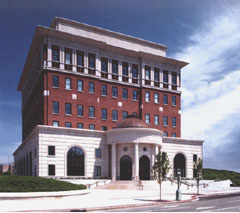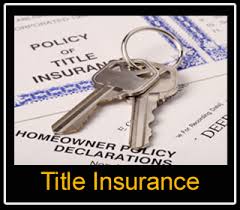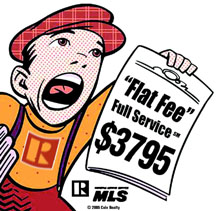 New York City’s population density inherently gives rise to noise complaints by cooperative neighbors. The New York Post reported today about a lawsuit filed by a cooperative shareholder against his neighbor for unreasonable noise caused by his neighbor’s piano playing. This blog entry will discuss the various issues raised by this lawsuit.
New York City’s population density inherently gives rise to noise complaints by cooperative neighbors. The New York Post reported today about a lawsuit filed by a cooperative shareholder against his neighbor for unreasonable noise caused by his neighbor’s piano playing. This blog entry will discuss the various issues raised by this lawsuit.
Cooperatives are legally formed upon the acceptance of its Offering Plan for filing with the Real Estate Finance Bureau of the New York State Attorney General’s Office. The cooperative’s Proprietary Lease and House Rules would be included in its Offering Plan. At the closing, the shareholder signs the Proprietary Lease and House Rules, agreeing to the terms thereof. The Proprietary Lease contains the provisions by which a shareholder has the right to occupy a particular unit and the regulations governing such occupancy, such as the obligation to pay maintenance, sublease rules and rights to transfer the unit. House Rules contain specific itemized rules such as where packages may be delivered, laundry room rules, move-in and move-out regulations, and rules governing which elevator can be used for freight or pets. If the House Rules are violated, such a breach is deemed to be a violation of the Proprietary Lease. The Proprietary Lease contains provisions for the cooperative’s board’s response to a default, typically commenced by the service of a default notice, which may result in the service of a termination notice.
Most Proprietary Leases contain a clause prohibiting a shareholder from making unreasonable noises. Likewise, the House Rules governing many cooperative buildings commonly prohibit the playing of musical instruments between the hours of 11:00 pm and 9:00 am. Once a shareholder finds the noise to be unreasonable, he should bring the matter to the attention of the board of the cooperative, encouraging the commencement of a default procedure against the offending shareholder under the objectionable conduct provisions contained in the Proprietary Lease. Should the Board remain unresponsive, the shareholder may need to commence a lawsuit against the cooperative for failure to enforce the governing documents and against the shareholder who is continuing to make unreasonable noise.




 The resurging real estate market brings with it the real estate “flipper”. A flipper is a person or entity that purchases property with the goal of renovating it for a quick sale at a substantial profit. The flipper never intends to occupy the property in the neighborhood. Recently,
The resurging real estate market brings with it the real estate “flipper”. A flipper is a person or entity that purchases property with the goal of renovating it for a quick sale at a substantial profit. The flipper never intends to occupy the property in the neighborhood. Recently,  Our readers may be aware of an
Our readers may be aware of an  A
A 
 Real estate transactions commonly involve the inclusion of title insurance policies. For the purposes of this blog post, we will be discussing title insurance obtained when a person purchases a house. Title insurance is a unique type of insurance, in that the events that are to be covered have already occurred. For instance, an automobile policy covers loss resulting from an accident that could happen after the policy is bound. On the other hand, title insurance covers acts that have already happened but not discovered prior to closing, such as a fraudulent deed in the chain of title.
Real estate transactions commonly involve the inclusion of title insurance policies. For the purposes of this blog post, we will be discussing title insurance obtained when a person purchases a house. Title insurance is a unique type of insurance, in that the events that are to be covered have already occurred. For instance, an automobile policy covers loss resulting from an accident that could happen after the policy is bound. On the other hand, title insurance covers acts that have already happened but not discovered prior to closing, such as a fraudulent deed in the chain of title. Our firm often fields inquiries from clients regarding residential lease situations. One common question relates to the right to renew an existing lease. This blog post will explain certain conditions which may apply to the renewal of a lease after it expires.
Our firm often fields inquiries from clients regarding residential lease situations. One common question relates to the right to renew an existing lease. This blog post will explain certain conditions which may apply to the renewal of a lease after it expires.  Our readers who follow politics know that members of Congress have battled in recent years with respect to revisions to the tax law. Specifically, estate, gift, and income taxes have been subject to adjustments. The purpose of this blog post is not to describe the
Our readers who follow politics know that members of Congress have battled in recent years with respect to revisions to the tax law. Specifically, estate, gift, and income taxes have been subject to adjustments. The purpose of this blog post is not to describe the 
 Bundled services have commonly been offered to purchasers of real estate in New York. For example, a real estate broker, wishing to enhance an affiliated title insurance company, has a program that encourages attorneys to refer their title business to the title company. A title agent provides tax reduction services as a benefit to its title customers. Mortgage providers may have an affiliation with a real estate broker. Purchasers may consider bundled services to be convenient and beneficial. They may be unfamiliar with the community in which they are purchasing or new to the process, giving them the tendency to trust recommendations of professionals that they have already selected. However, in some cases, bundled services predominantly benefit those entities to which the referral is made and do not necessarily result in better or less expensive service for the customer.
Bundled services have commonly been offered to purchasers of real estate in New York. For example, a real estate broker, wishing to enhance an affiliated title insurance company, has a program that encourages attorneys to refer their title business to the title company. A title agent provides tax reduction services as a benefit to its title customers. Mortgage providers may have an affiliation with a real estate broker. Purchasers may consider bundled services to be convenient and beneficial. They may be unfamiliar with the community in which they are purchasing or new to the process, giving them the tendency to trust recommendations of professionals that they have already selected. However, in some cases, bundled services predominantly benefit those entities to which the referral is made and do not necessarily result in better or less expensive service for the customer.